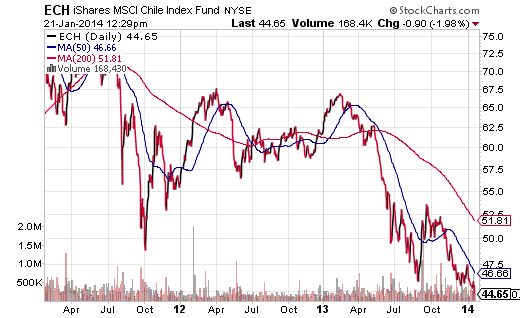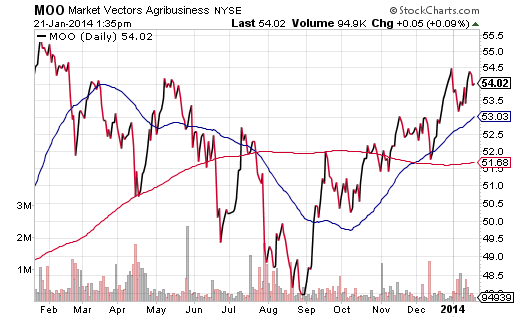Investors are punishing commodity-rich countries yet again. As popular developed market funds like iShares MSCI United Kingdom (EWU) prosper, iShares MSCI Canada (EWC) and its heavy energy allocation keep the exchange-traded tracker languishing near 52-week lows. Similarly, iShares MSCI Frontier Markets 100 (FM) continues attracting buyers, whereas copper king Chile via iShares MSCI Chile (ECH) has seen its fortunes evaporate over the course of three years.

Retail investors are not the only group convinced that most commodities will drag on buy-no-hold portfolios. The majority of money managers and institutional advisers are equally negative on everything from gold to industrial metals to wheat. The reasoning may differ — stronger U.S. dollar, weak emerging market demand, global deflation — yet the conclusions are eerily similar.
Perhaps ironically, the herd appears to be ignoring the reality that it is buying stocks near all-time highs while simultaneously dismissing the potential of commodities after years of disappointment. In 2013, the S&P 500 garnered more than 29%; the iShares S&P GSCI Commodity Index (GSG) logged -3.5%. Over the last 3 years, the disparity is even more shocking, as the S&P 500 registered approximately 42.5% at the expense of commodity declines of roughly -10%. And yet, nobody seems to be discussing the possibility that commodities could be offering a better “buy low” risk-reward opportunity.

In truth, I have talked about the adverse effects that global deflation scares might have on a number of commodities. And this might be reason enough to look away from total commodity index funds like iShares S&P GSCI Commodity (GSG). For that matter, GSG has not been able to sustain itself above a long-term 200-day trendline, further muddying the technical picture.
Nevertheless, it seems counter-intuitive for the same analysts to recognize economic improvement in the U.S., Europe and China, and not anticipate a better advance for commodities. Soft commodities as a group have been particularly hard hit, from sugar to corn to soybeans. Still, if growth were to improve in these regions, couldn’t the so-called “agri-related” stuff benefit? If European and Japanese contraction has actually reversed itself, and the emerging markets stabilize, wouldn’t that be a net positive for commodity demand?
Since I have yet to see the technical indicators change for the crushed commodity arena, I have chosen a slightly different path in the quest to “buy lower.” Back in November, I liked the value play being offered by an ETF tracking the Market Vectors Global Agribusiness Index. Specifically, Market Vectors Agribusiness (MOO) had been capturing beaten-down companies like Deere (DE) and Potash Corp (POT) — companies that had been hurting due to weakness in fertilizer production and equipment building. Yet even then, the technical picture was beginning to reflect the favorable valuation. Today, the price of MOO is solidly above its 200-day moving average. Equally compelling, the 50-day climbed above its 200-day at the start of December, further solidifying demand for the global asset.

Disclosure: Gary Gordon, MS, CFP is the president of Pacific Park Financial, Inc., a Registered Investment Adviser with the SEC. Gary Gordon, Pacific Park Financial, Inc, and/or its clients may hold positions in the ETFs, mutual funds, and/or any investment asset mentioned above. The commentary does not constitute individualized investment advice. The opinions offered herein are not personalized recommendations to buy, sell or hold securities. At times, issuers of exchange-traded products compensate Pacific Park Financial, Inc. or its subsidiaries for advertising at the ETF Expert web site. ETF Expert content is created independently of any advertising relationships.
